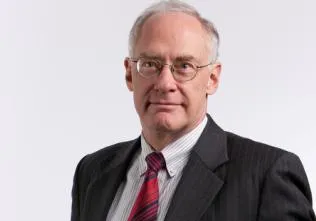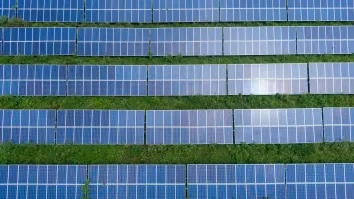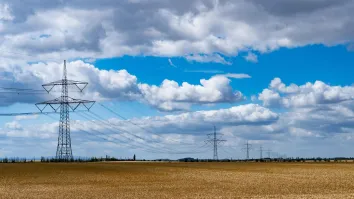
20 years of Asia-Pacific wholesale electricity market development
17 March 1991. Just 20 years ago, I set foot in Asia Pacific for the first time. Since then, major changes have occurred in the landscape of Asia-Pacific power markets. And I and my colleagues at The Lantau Group (TLG) have had the opportunity to witness and shape a lot of these changes and learn a great deal in the process.
Back in 1991, while at Putnam, Hayes & Bartlett (PHB), a US-based economic consulting firm, I was working with Dr William Hogan (Harvard’s Kennedy School), who was pioneering his locational spot pricing theory. At the time, PHB was consulting on electricity reform issues with the Electricity Commission of New Zealand (ECNZ). Bill convinced them of the promise of locational spot pricing and asked me to work with ECNZ to develop a prototype model to implement his ex post pricing theory.
I spent a whirlwind 12 days in Wellington. By the time I left, we had a working model of the entire NZ electricity system, the first such country-wide spot pricing model in existence – and a model that yielded rather interesting and counter-intuitive results. During that visit I had the opportunity to discuss the results with Dr Grant Read (University of Canterbury), who was also working with ECNZ on wholesale restructuring issues. The NZ electricity system had significant transmission constraints, particularly on the North Island. We found that the nodal prices on one side of the constraint were elevated, while those on the other side they were depressed, sometimes below zero. The concept of negative prices seemed very strange, but despite our best attempts to prove otherwise, they correctly represented the marginal cost of power at the respective locations. Grant (and Brendan Ring) later termed this divergence in prices across a transmission constraint “the spring washer effect.”
Unfortunately, I haven’t been back to NZ since. PHB opened a Wellington office, however, and continued to play a major role in the intellectual design of the market. Mike Thomas (another founding partner at The Lantau Group), also at PHB, moved to Wellington in 1996 and eventually led PHB’s office and its entire Asia-Pacific practice. As a Senior Advisor to PHB, Grant Read was a driving force in the NZ market design. By April 1999 – fully 12 years after ECNZ was created as a commercial entity – the basic building blocks of wholesale market reform were finally and firmly in place. NZ had a nodal wholesale spot market, the split of ECNZ into three competing state-owned generators, complete unbundling of transmission from generation, and separate ownership of distribution and retailing businesses.
Lesson #1: Creating an effective wholesale market requires a sustained commitment.
Instead I moved on to New South Wales in April 1991. Premier Nick Greiner, a fiscal conservative, had assembled a group of market-oriented reformers within the Treasury determined to shake up the Electricity Commission of New South Wales (ECNSW). Working with Larry Ruff of PHB, I assisted a Restructuring Task Force headed by John Pierce, Brian Spalding, and Paul Smith. The Task Force developed an internal power pool and split the generating assets into three competing business units as a precursor to the development of a broader market.
Buoyed by strong poll results, Greiner called a by-election on 25 May 1991. The “election he could not lose” instead produced a hung Parliament, and Greiner was forced to form a shaky minority government. Realising the shift in the political power balance, ECNSW pushed back hard against the pressures for competitive reform. Although ECNSW began trading as Pacific Power in 1992, the planned corporatisation was put on hold. Greiner lost the Premiership in June 1992. By September, restructuring efforts effectively dragged to a halt. I went back to the US and spent the next 16 years there working in electricity markets.
Lesson #2: Reform is doomed unless there are clear measures in place to mitigate the political power of the dominant incumbent.
Reform died in NSW, but rose like a phoenix from the ashes in Victoria. Jeff Kennett became Premier in a landslide victory in October 1992 and embarked on an extensive privatisation programme. Treasury reformers from NSW moved to Victoria to further the cause. Reform was off and running. The State Electricity Commission of Victoria (SECV) was corporatised and unbundled within a year. By the following year, VicPool was established to become Australia’s first electricity market. In the decade from the late 1980s through 1997, employment in the electricity system dropped from over 20,000 to a little over 6,000.
Lesson #3: Competition and effective regulation can unleash tremendous efficiency incentives.
By late 1994, the train of reform had cleared the summit and was speeding steadily downhill. The Victorian reform led to national electricity reform and subsequently to reform efforts in the other states. In December 1998 the National Electricity Market (NEM, consisting then of Victoria, New South Wales, South Australia, Queensland, and the Australian Capital Territory) began operation.
PHB opened Melbourne and Sydney offices. Sarah Fairhurst, another founding partner at the Lantau Group, moved from PowerGen (where she led the commercial team bidding for the first generator to be privatised in Victoria in 1995) to PHB in 1998. PHB nerged with Hagler-Bailly in 1999 and was acquired by PA Consulting in October 2000. Shortly thereafter, the Asia-Pacific PHB team left PA and moved to Charles River Associates (CRA). Greg Thorpe joined in 2001 after being Associate Director at the National Electricity Code Administrator. CRA was active as the NEM market arrangements continued to evolve and, in 2004, helped establish a competitive wholesale market in Western Australia.
Lesson #4: Wholesale restructuring and competition are contagious.
Whereas the desire for competition and efficiency drove electricity restructuring in Australia and NZ, escalating demand and a severe shortage of capital drove early changes in Asian electricity systems. The Philippines moved first. After facing blackouts for up to 10 hours a day, the Philippines signed the first contracts with independent power producers (IPPs) in 1989. But these contracts suffered a high mortality rate. Hopewell’s Navotas I was the only project in the early years to reach financial closure, coming on line in 1991. Continued blackouts in 1992 prompted the passage of the 1993 Electric Power Crisis Act, authorising the negotiation of IPPs on a fast-track basis. Within 18 months, the Philippines installed several thousand MWs of new IPPs. Indonesia granted the first IPP contract in 1990, followed by 25 additional IPPs through 1997. In Malaysia, the tipping event was a lightning strike of a transmission facility in 1992 that caused a severe blackout. Fearing loss of reliability and investor confidence, the Malaysian government signed IPPs to bolster the reserve margin. Thailand also legalised IPPs in 1992. The first private power producer in May 1992 was actually an EGAT subsidiary, The Electricity Generating Company (EGCo), that purchased two of EGAT’s most profitable plants. But two subsequent rounds of competitive tendering resulted in 6000 MW of signed PPAs by 1997. Sarah Fairhurst participated in many of these developments during this period while at PowerGen.
Lesson #5: If you pay them (well enough), they will come.
While these early Asian IPP developments successfully created MWs, they sometimes came at considerable cost. After all, governments like the Philippines trying to address massive power shortages do not negotiate from a position of strength. Moreover, the strong reliance on negotiation failed to tap efficiencies achievable via competitive tendering. In Malaysia, the strength of political connections proved to be far more important than electricity development experience. These deals tended to be relatively high-cost and – reportedly – very lucrative for the developers. In Indonesia, foreign IPP developers proved to be much better negotiators than the inexperienced PLN engineers, particularly given the contractual constraints imposed by high-level policy concessions granted by President Suharto. Arguing that Indonesia was a high-risk environment, the IPPs were also able to lock in commensurately high equity returns. In Thailand, EGCo obtained 19 and 20 percent risk-free equity returns on the PPAs it negotiated with EGAT.
Lesson #6: IPPs bring MWs and often great efficiencies, but not always low cost.
The Asian economic crisis in 1997 struck like a concrete wall in the path of the runaway economic train. The resulting dislocation accelerated efforts for more fundamental market reforms that had been simmering quietly during the IPP gold rush. Singapore established an Electricity Pool in April 1998 to facilitate wholesale power trading. But the aborted sale of Tuas Power in 1999 forced the Ministry of Trade and Industry to re-think the market structure. PHB participated in the review and recommended a complete restructuring. Within four years, Singapore passed enabling legislation, restructured Singapore Power, established the Energy Market Authority (EMA) as regulator, and began the National Electricity Market of Singapore (NEMS) in April 2003. Both Mike Thomas and Sarah Fairhurst (as well as other current TLG affiliates) participated in parts of the market design.
The Philippines acted at about the same time – albeit not quite as swiftly – passing legislation in 2001 and establishing the Wholesale Electricity Spot Market (WEMS) in June 2006. In October 2000, pushed by the pro-reform Energy Minister Piyasvasti Amranand, Thailand approved the unbundling of the electricity sector in order to create competition in the power sector by 2003. Similarly, in December 2000, South Korea embarked on an ambitious reform by passing legislation that would carve up and privatise KEPCO, establish a Korean Power Exchange (KPX) and independent regulator, and open the market to full retail competition. Indonesia passed Electricity Law 20/2002 to unbundle PLN and gradually introduce competition.
Singapore and the Philippines scaled the electricity restructuring summit, Thailand and Indonesia turned back. South Korea got stuck partway up the slope. Having ascended to Prime Minister of Thailand in 2001, Thaksin Shinawatra sacrificed market reform in favour of privatising EGAT as the “National Champion.” Under pressure from the unions and suffering doubts after the debacle in California, but after establishing a Cost-Based Pool (CBP), South Korea suspended further reform efforts in April 2003 and formally halted electricity sector liberalisation in June 2004. Then Indonesia’s Constitutional Court overturned Electricity Law 20/2002 in 2004.
Lesson #7: Obstacles to wholesale restructuring and regulatory reform can also spread like wildfire.
In addition to crafting the Singapore roadmap, PHB experts (and later while at CRA) made major contributions to the market developments in the Philippines and South Korea. CRA continued to support market changes and regulatory developments throughout Asia-Pacific. The Lantau Group arose in December 2010 as a management buyout of CRA’s Asia-Pacific energy practice.
Twenty years have now passed since I first arrived in Asia Pacific – two decades of tremendous change. What lies ahead? I foresee a number of challenges:
• Regional electricity interconnection can produce significant cost reductions. Will increasing Asian prosperity lessen the nationalistic barriers to more complete integration of neighbouring electricity systems? Or will have/have-not differences continue to block cross-border trade?
• Will independent regulation – as in Thailand by the Energy Regulatory Commission (ERC) and Malaysia by Energy Commission – thrive to become an effective force for evolutionary reform? Or will the dominant incumbents, political interference, and vested interests thwart change?
• Countries like Thailand, Malaysia, Vietnam, and Indonesia face rising gas demands and declining domestic supplies. LNG will fill the demand gap, but at prices two to three times the cost of domestic supplies. How will these countries manage the effects of LNG on gas pricing? Will they impose policies that attempt to preserve historic price levels – thereby encouraging excessive demand? Or will they set prices to signal the true cost of incremental LNG use?
• Coal is the least-cost baseload resource across much of Asia. But coal has negative environmental and social impacts, particularly in a carbon-constrained world. Nonetheless, the gap between the all-in cost of coal and gas (based on LNG prices) is larger than would be implied by any projected price of carbon. How will governments deal with this conflict?
• Renewables – particularly wind and solar – are environmentally friendly and the current focus of many developers. But they’re expensive and hard to integrate into electricity systems. On a small scale, the impacts are manageable. On a much larger scale, the impacts can be sizeable. Will governments still push for environmentally friendliness as costs mount up? If so, who will pay?
• As evidenced by China’s growing nuclear programme, nuclear can be very cost-effective. Countries such as Thailand, Malaysia, Vietnam, and the Philippines have embraced the possibility of nuclear in their development programmes. But challenges remain in terms of safety and spent fuel disposal, particularly in light of the ongoing tragedy at Fukushima. Does nuclear have a future in Southeast Asia?
The next 20 years should be interesting...
Thomas Parkinson, Partner, The Lantau Group



















 Advertise
Advertise






